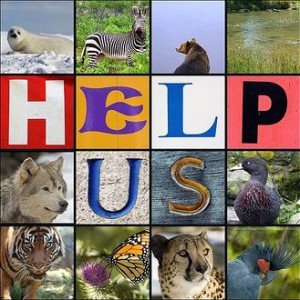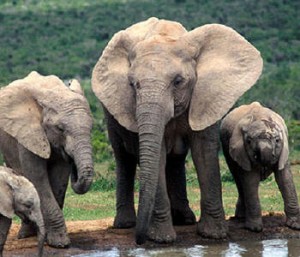The Predicted Losses Keep on Coming
Jul 30th, 2013 | By admin | Category: Biodiversity/ConservationBy Suzanne York, www.howmany.org
The studies keep coming, and our society ignores them at its own peril. This time, the issues are endangered species and loss of biodiversity.
In June, scientists at Ohio State University warned that a still rapidly growing human population poses a threat to hundreds of mammal and bird species with extinction within 40 years. This report was released just prior to revised population projections from the United Nations that now predict 9.6 billion people on earth by 2050.
The Democratic Republic of the Congo tops the list, with a predicted new threat to more than 20 species between now and 2050. The United States ranks sixth in the world in the number of new species expected to be threatened by 2050.
Anthropologist Jeffrey McKee, lead author of the study, which was published in Human Ecology, said that “You can do all the conservation in the world that you want, but it’s going to be for naught if we don’t keep the human population in check.”
Now another study has come out on threats to species around the world, this time focused a different impact of humankind on nature – climate change.
Researchers at the University of Arizona found that species would have to evolve 10,000 times faster than they have in the past in order to keep up with the earth’s rapidly changing climate. They pointed out that this pace of evolution is “largely unprecedented based on observed rates.”
The blog Climate Progress notes that it’s been unclear so far how exactly wildlife will react to climate change, but the initial findings haven’t been promising. The Intergovernmental Panel on Climate Change predicts that between 40 and 70 percent of species could go extinct if temperatures rise by more than 3.5 degrees Celsius, and yet another recent study found that when CO2 levels doubled towards the end of the Triassic Period, three-quarters of all the planet’s species died off.
Of course this doesn’t even take into account poaching. There is a good chance that having animals such as tigers, elephants and rhinos in the wild will become a thing of the past, as their numbers are increasingly dropping due to poaching. Approximately 30,000 elephants were killed in 2012. And as society becomes more urbanized – by 2050 7 out of 10 people will live in cities – more and more natural habitat will be destroyed.
Many scientists believe that the planet is in the midst of its sixth mass extinction. And yes, a study out of the University of California, Berkeley calculated that three-quarters of today’s animal species could vanish within 300 years.
More studies will appear, more predictions will be made, but the main point is that too many species are at risk mainly due to human impacts. No solution will be easy, but ending poaching, for example, will be easier to implement than mitigating climate change. Even the Obama administration recognizes the urgency to halt wildlife trafficking; on a recent trip to Africa the president announced the creation of a wildlife task force to devise a strategy for combatting poaching around the world.
“The entire world has a stake in making sure that we preserve Africa’s beauty for future generations,” President Obama said. This thinking should be extended to all corners of the earth, and all of nature, and put into action today.
Suzanne York is a senior writer with the Institute for Population Studies.
[Photo credits: collage – kidstuffworld.com; elephants – unmultimedia.org]


